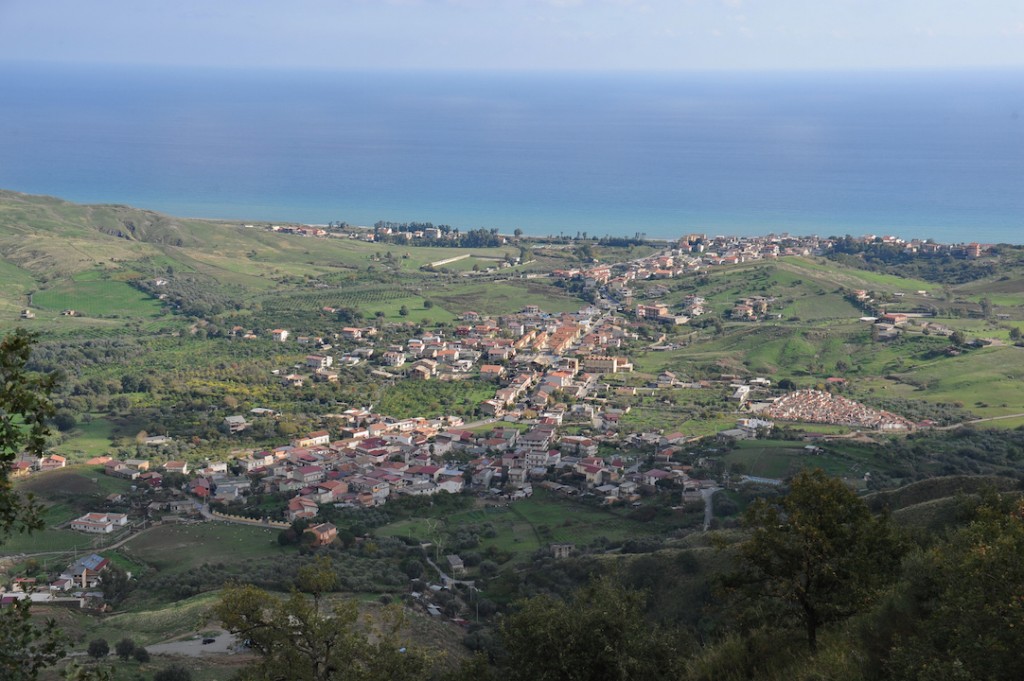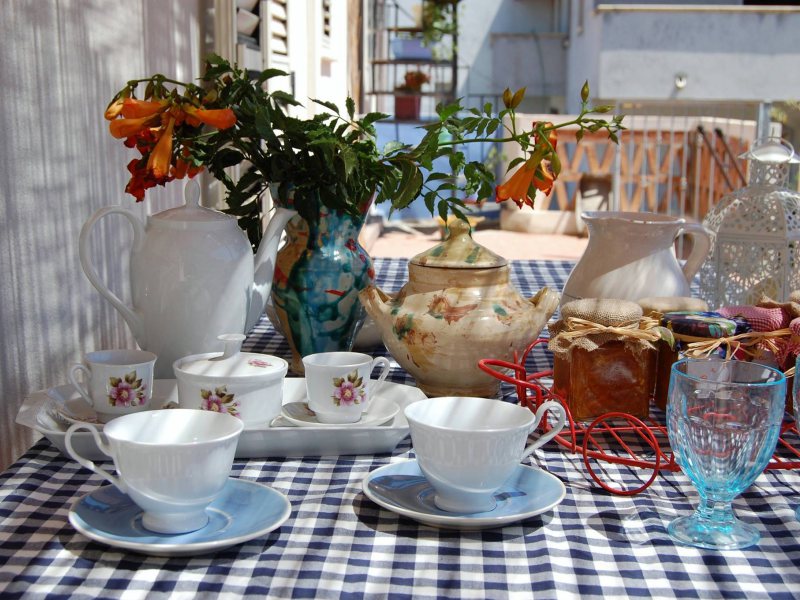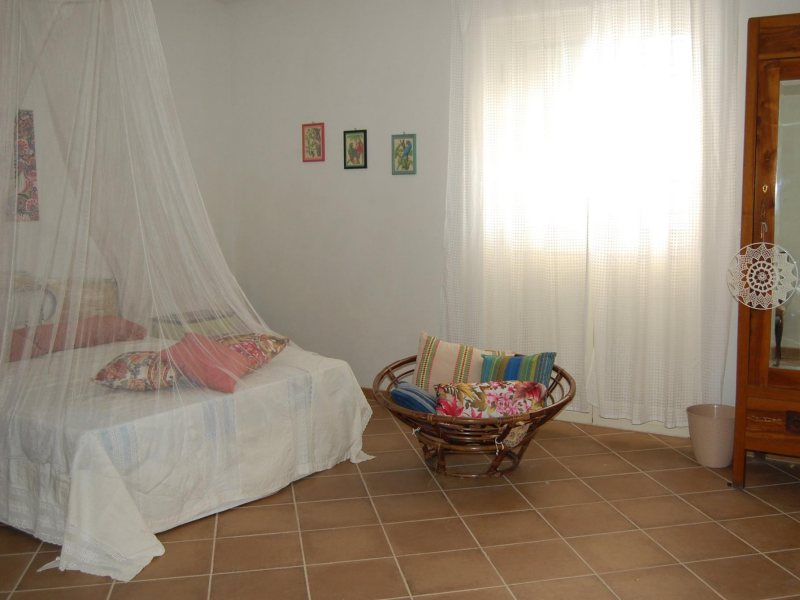The Armata Brancaleone B&B
Disponibilita Camere
Camere
General Info
The Armata Brancaleone B&B is situated in an area of great natural and historical-archaeological beauty. The house offers two double ensuite rooms and a large terrace about 200 metres from the beach. It is situated at a twenty-minute drive from the ancient Locri Epizephiry, the hub of the magnificent Magno-Grecian civilisation of the eighth century BC and about 10 minutes from the beautiful, historically and architecturally fascinating Roman villa at Casignana, dating from the first century AD, with its luxurious thermae system. The Armata Brancaleone B&B is only about 50 minutes from Reggio Calabria where it is possible to view the splendid Bronzi di Riace [The Riace Bronzes] and the Museo Archeologico Nazionale [National Archaeological Museum] that houses them. The area surrounding Brancaleone has much to offer, from the evocative abandoned hamlets, the fascinating local traditions and the tasty food provided by countryside and sea, alike. Brancaleone is also home to a Centre for the Recovery of the Caretta Caretta [Loggerhead] Sea Turtle , another of the many reasons for choosing to stay in this beautiful town in the Locri district.
Check-in
Check-out
Servizi
 Credit Card
Credit Card Internet
Internet Televisione
Televisione
Brancaleone

Costa dei gelsomini [The Jasmine Coast], Costa delle Tartarughe Caretta Caretta [The Loggerhead Sea-Turtle Coast] are two of the names by which Brancaleone, in particular, and the Ionian coastline of the Province of Reggio Calabria, in general, are known.
It was precisely here in Brancaleone that jasmine plants first appeared, when they were introduced from Liguria, in around 1928. The cultivation of this flower, brought to Europe for the first time in the sixteenth century, goes back several centuries before Christ, when its blossoms were used during sacred rites practiced in India and Nepal. Once it reached the Graecanic area, thanks to a land-reclamation project sponsored by Reggio Calabria’s Stazione Sperimentale delle Essenze [Experimental Station for Essences], this flower became important and jasmine plantations were set up to supply the lucrative cosmetics industry and made its mark in the area alongside the region’s so-called “green gold”, bergamot.
But Brancaleone is also recognised as the “cradle” of an important project aimed at safeguarding one of the Mediterranean’s most critically-endangered species, the Tartaruga Caretta Caretta [Loggerhead Sea Turtle]. The town hosts the headquarters of the Centro Recupero Tartarughe Marine [Sea Turtle Recovery Centre] engaged in the salvage, recovery and care of this species. The Graecanic beaches are one of the species’ main Mediterranean nesting and hatching sites as well as being home to 70% of all the nests registered in Italy. Thanks to the “Tarta Care” project, set up in the year 2000 and conducted by researchers from the University of Calabria, this species has been monitored and protected, so that the total of baby turtles born on the Ionian shores now exceeds the 10,000 mark.
THE NAME
In the past, the town was first called Sperlonga or Sperlinga, then Mottaleonis, a compound of motta [for] and leone [lion], probably meant in the metaphorical sense. The town’s present name seems to derive from the Latin branca [meaning claw], so that the name of the town means lion’s claw.
TOWNLANDS AND LOCALITIES
Brancaleone Marina, Capo Spartivento, Galati, Fiumarella, Pantano Grande, Pressocito, Razzà.
HISTORY
Brancaleone Marina, which today hosts the centre for the salvage and recovery of the Loggerhead Sea Turtle, also keeps alive the memory of the Piedmontese writer Cesare Pavese who was exiled here by the fascist regime, between 1935 and 1936.
The history of Brancaleone is associated with the abandoned hamlet situated behind it and known as Brancaleone vecchio [Old Brancaleone].
Clinging to a rock face of a little under 300 metres in height, we find Brancaleone vecchio, in olden times known as Sperlinga, from the Greek Spèlugx, cavern. This village evolved from a range of grottos inhabited by contemplative hermits who chose to dwell and meditate there between the eighth and tenth centuries AD. Recent archaeological excavations, carried out on the eastern side of the church of the Addolorata, have revealed how some of these caves were used to store food, indispensable for the survival of the tiny hamlet, which was probably fortified during the late Byzantine period. On the highest point overlooking the hamlet, stood a fortress, which documents show as belonging to the Ruffo family in the fourteenth century, when the village began to be called Motta Leonis. In 1489, the building was listed among the castles the Aragon dynasty intended to enlarge and strengthen, to enhance the Kingdom’s defences. Annexed to the Ayerbo d’Aragona fiefdom in 1515, Brancaleone became the property of the Spatafora family in 1571, through whom it passed on to the Carafas, remaining theirs until 1806. The hamlet is divided into two nuclei: the first is near the site of the old Chiesa Matrice dell’Addolorata, of which the only ground-level flooring remains; the second nucleus extends further south, behind the Archidiaconal Church of the Annunziata and was built in the seventeenth century on a terraced plateau at the town entrance, on the ruins of a Capuchin monastery, it seems. Near the church of the Addolorata, close to a clearing excavated recently by archaeologists, stand the remains of a church cut out of the tufa stone and featuring a central column carved from the rock. At the entrance there is an altar bearing the engraving of a cross and a bird, maybe a dove or a peacock, in prayer. On the western side of the hamlet there is another grotto, with a modern painting of angels in the presence of the Virgin Mary.
ILLUSTRIOUS PERSONAGES
In Brancaleone it is still possible to see the house where Cesare Pavese lived during his exile. The writer and intellectual was forcibly exiled here, from 1935 to 1936, by the regime on suspicion of anti-fascist activity. Here he began writing the diary entitled Il mestiere di Vivere [lit. The Business of Living, published in English as The Burning Brand] and his first novel Il Carcere [Prison]. Far from his beloved Turin, Pavese simultaneously loved and despised the place and the people hosting him. Of the locals he wrote to his sister “these people have such tact and courtesy that there can be only one explanation: the civilisation here was once Greek”.
EXPLORING THE TOWN
Brancaleone Superiore [Upper] is a small hamlet, so picturesque that a visit to this old village is a must. Here it is possible to ramble among the abandoned houses while enjoying the amazing view. A trip to Brancaleone Marina and the Loggerhead Sea Turtle recovery centre is well worthwhile.
https://youtu.be/RLz4SEpkPlU
Continua a leggere

















